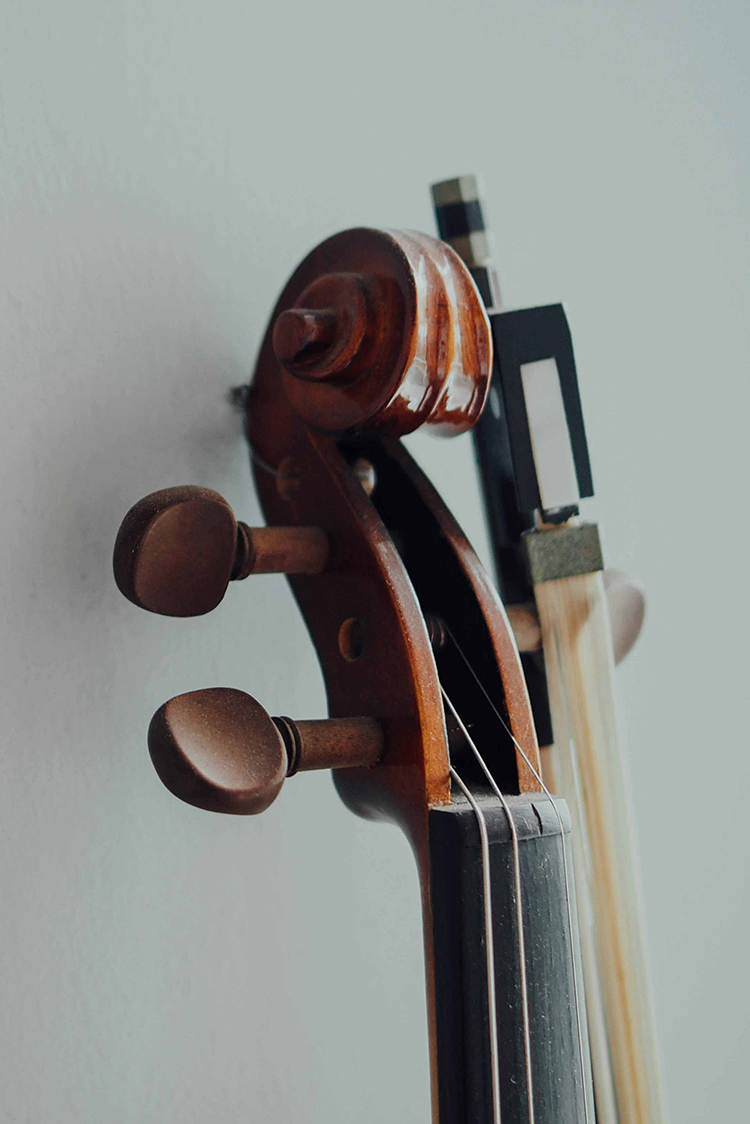






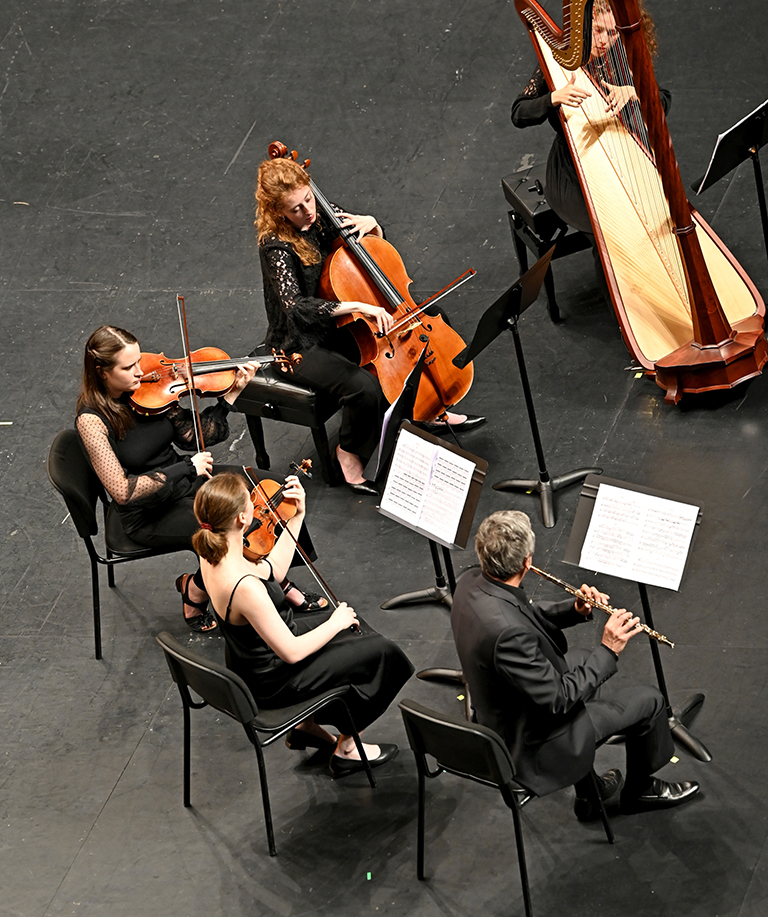
Fundación Albéniz
Fundación Banco Santander supports Fundación Albéniz and its Reina Sofía School of Music by sponsoring the following initiatives to teach and divulge classical music.
The foundation has sponsored the Piano Chair at the Reina Sofía School of Music since 1991. Twenty-nine students received instruction in the chair’s two units, led by Milana Chernyavska and Stanislav Ioudenitch, in 2023.
The Reina Sofía School of Music has a free online video channel where it posts recordings of student concerts and classes in different instruments given by prestigious master musicians.
The foundation organises four concerts every year for Grupo Santander employees and their families featuring the orchestras of the Reina Sofía School of Music. A total of 1,500 people attended in 2023.
This educational programme invites primary and secondary school pupils to attend live concerts at the National Music Auditorium in Madrid and offers a virtual reality experience in the classroom.
2023 marked the twenty-second anniversary of this event, which every July gives promising young talents the chance to learn from and share the stage with established musicians at different venues across Cantabria. The foundation sponsored two concerts, held on 18 and 26 July at Argenta Hall in the Cantabria Palace of Festivals, which were attended by 1,415 people.
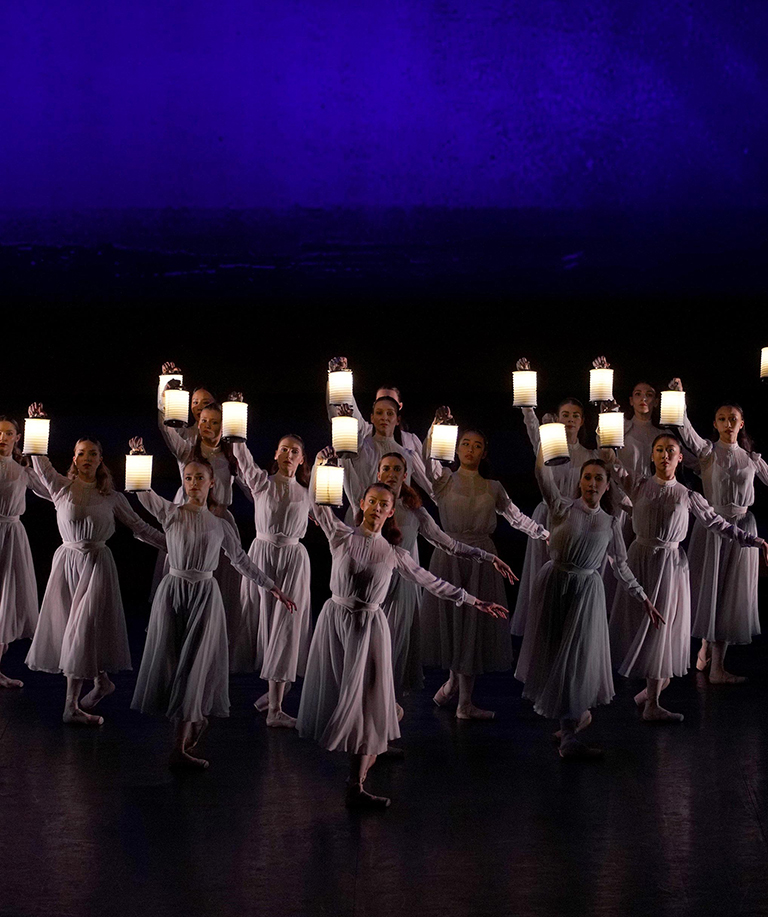
Teatro Real
Fundación Banco Santander is one of the principal patrons of this institution, a renowned temple of the performing arts.
The theatre’s 2023 opera programme retrieved titles that had been postponed in previous seasons due to the pandemic, such as Corselli’s Achille in Sciro, but it also featured new productions, most notably Rossini’s Il turco in Italia and Charpentier’s Medea.
Dance was represented by three great international companies—the New York City Ballet, the English National Ballet and the Ballet du Grand Théâtre de Genève—while the Voces del Real programme offered recitals by baritone Matthias Goerne, mezzo-soprano Joyce DiDonato, tenor Javier Camarena and countertenor Franco Fagioli.
The scheduled performances were rounded out by a variety of educational initiatives and activities designed to introduce these art forms to a wider audience.
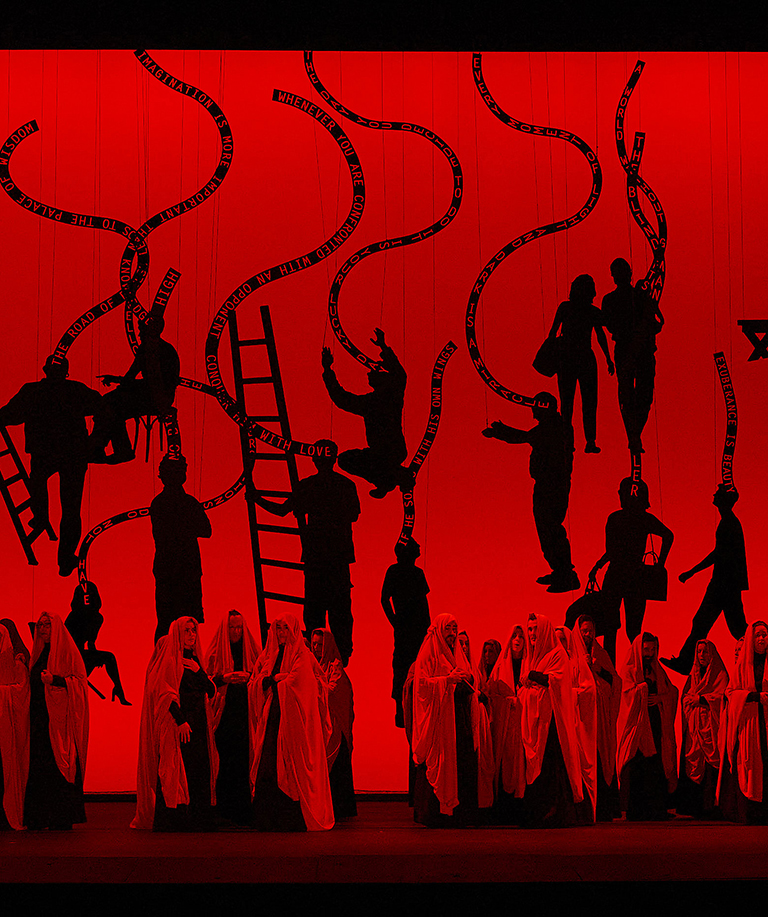
Gran Teatre del Liceu
Fundación Banco Santander is a sponsor of the musical seasons of the Gran Teatre del Liceu in Barcelona. In 2023, its contribution facilitated the performance of two operas—Verdi’s Macbeth and Haydn’s Orlando paladino—and a recital by soprano Sondra Radvanovsky.
The Liceu staged its new production of Macbeth from 16 February to 3 March, with set and wardrobe designs by visual artist Jaume Plensa that combined contemporaneity and innovation on the stage.
The concert version of Orlando paladino premiered at the Liceu on 29 October, featuring the instrumental ensemble Il Giardino Armonico, conducted by its founder, Giovanni Antonini, and singers specialised in early music.
On 18 December, the soprano Sondra Radvanovsky, accompanied on the piano by Anthony Manoli, gave a recital of selected arias and lieder by great composers like Händel, Liszt, Strauss, Verdi and Bellini.
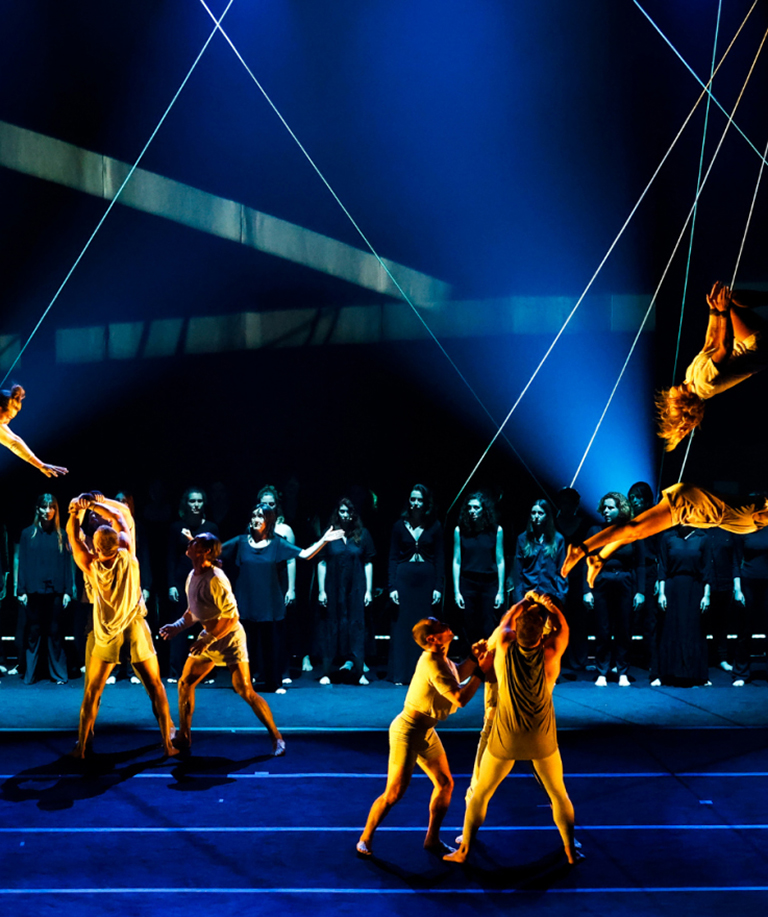
Orfeó Català Choir School
The Orfeó Català Choir School is an educational, artistic and social project sponsored by Fundación Banco Santander. It consists of over two hundred children and young people between the ages of 6 and 25, divided into five choral ensembles: Cor Petits, Cor Mitjans, Cor Infantil, Cor de Noies and Cor Jove.
Many of the singers in the prestigious Orfeó Català were trained at this school. Its teaching staff, comprising conductors, pianists and experts in vocal performance and music theory, gives the pupils the training they need at each stage of development in order to eventually join an adult choir.
The five choirs maintain a busy schedule throughout the year and participate in leading musical events alongside other ensembles, performing iconic pieces from the universal choral repertoire.
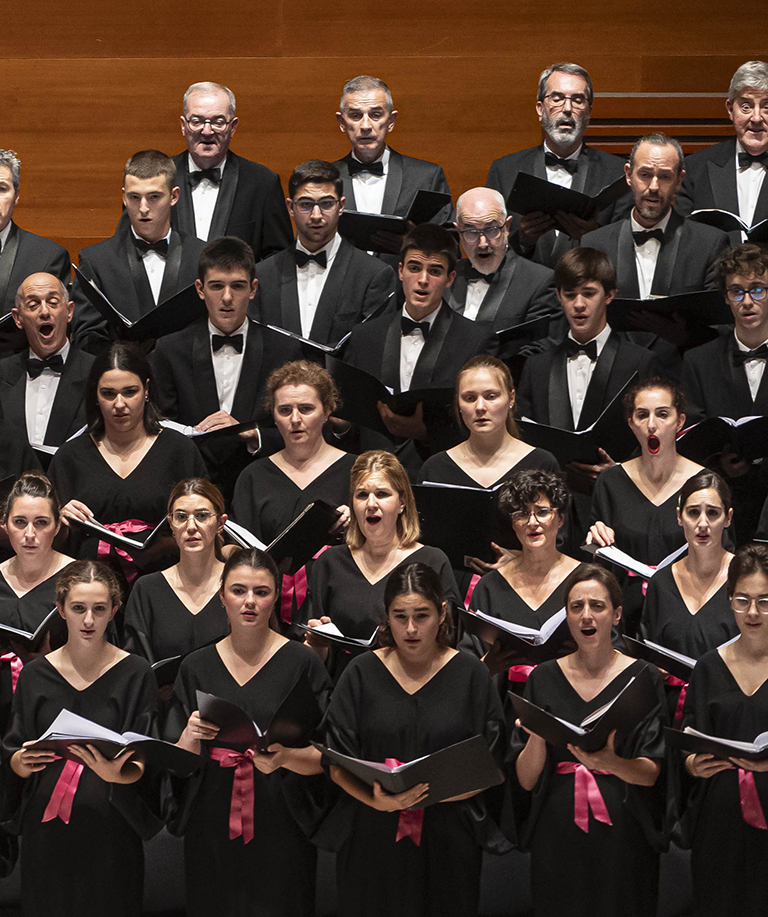
Orfeón Donostiarra
Fundación Banco Santander is a Friend of Honour of the Orfeón Donostiarra, one of the most important amateur choral ensembles in Europe.
It is made up of nearly two hundred sopranos, altos, tenors and basses, and its repertoire includes symphonic choral works, zarzuelas, operas, folk songs and polyphonic music.
The Orfeón maintains an intense performance schedule and sings at the top national and international festivals with prestigious conductors, orchestras and soloists.
Some of its concerts are also available as video and audio files uploaded to the multimedia section of the choir’s website, and as recordings released on major labels. In addition, the choir regularly shares pictures, videos and information via its social media.
The ensemble’s vocal excellence has earned it many distinctions in its 120-year history, including the Fundación Excelentia Award, the Príncipe de Asturias Award for the Arts, the Ondas Prize and the Universal Basque Prize.
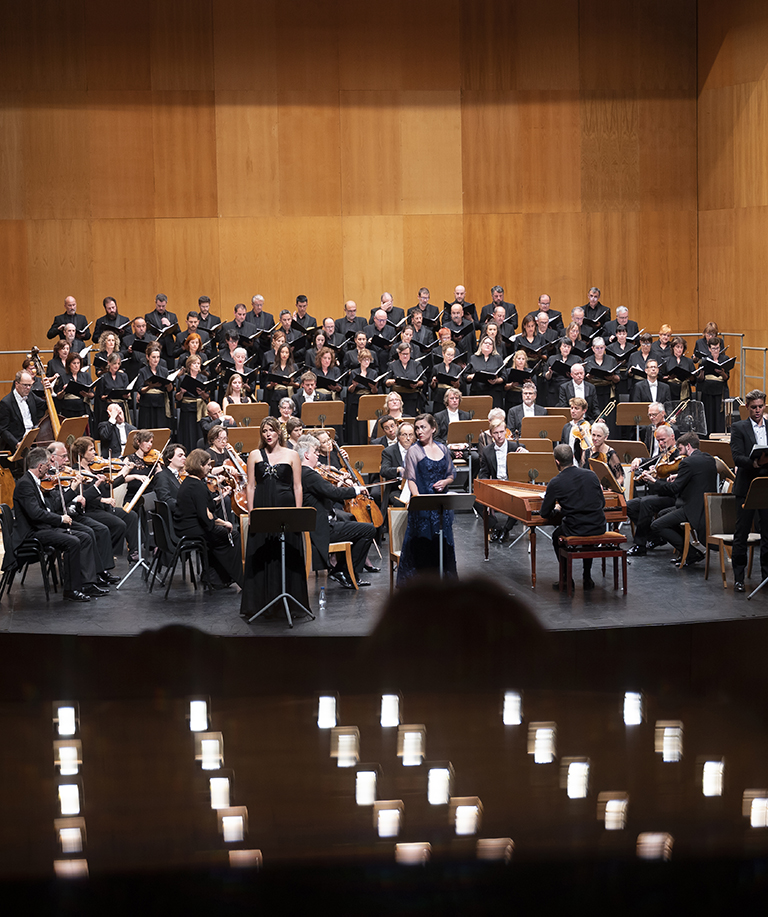
Festival Internacional de Santander
The foundation is a patron of the Santander International Festival, which every August offers audiences a variety of music and dance shows of the highest artistic quality.
For the 72nd festival, held from 5 to 31 August, Fundación Banco Santander sponsored the closing concert at Argenta Hall in the Cantabria Palace of Festivals, where Omer Meir Wellber conducted the Deutsche Kammerphilharmonie Bremen in a performance of Beethoven’s Symphony No. 1 and Haydn’s Nelson Mass. The orchestra was accompanied by the voices of soprano Heidi Stober, mezzo-soprano Cecilia Molinari, tenor Martin Mitterrutzner, bass Stefan Cerny and the Andra Mari chorale.

Violonchelo Francesco Ruggieri
The foundation extended the loan of a seventeenth-century cello to Asier Polo, whom music critics consider to be one of the greatest musicians of his generation.
The instrument was crafted in about 1689 by Francesco Ruggieri, a luthier of the renowned Cremona school. He used the finest wood and beautiful varnishes to create his pieces, which are admired for their sweet and powerful sound.
This instrument has two qualities that make it particularly valuable. The first is that it was built before the year 1700, when Stradivari established the definitive standards of cello construction, so its proportions differ from those of a modern cello. The second is that it was commissioned by church authorities for liturgical use. There is a hole in the bottom, now covered up, for a strap that would have passed round the cellist’s neck, allowing it to be played in processions.

